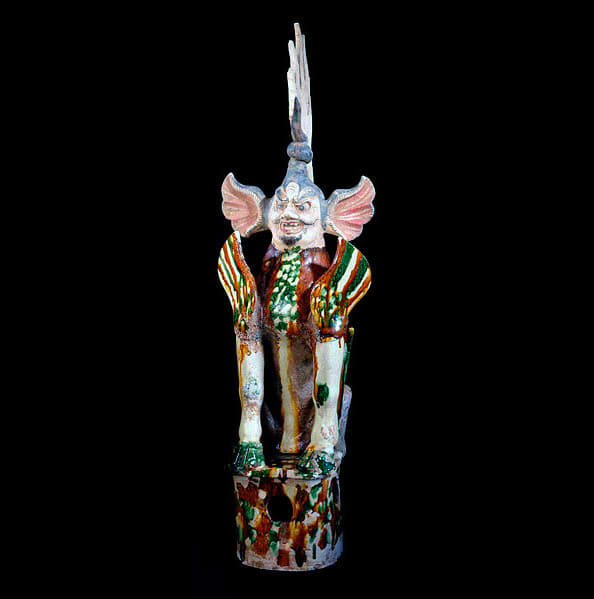Tang Sancai-Glazed Tomb Guardian, 618 CE - 906 CE
Glazed Terracotta
33
H.680
Originating during the Six Dynasties period (222-589 A.D.), this type of figure is known as a tomb guardian, for originally, a pair of such figures always stood guard at the...
Originating during the Six Dynasties period (222-589 A.D.), this type of figure is known as a tomb guardian, for originally, a pair of such figures always stood guard at the tombs of Chinese rulers. Traditionally, both figures in the pair are mythological composite creatures, one always an amalgamation of various animals while the other combined of human and animal traits. These guardians are a general type of Chinese art known as mingqi. Mingqi were any of a variety of objects specifically created for interment in the tombs of elite individuals in order to provide for the afterlife. These guardians were most likely interred in order to ward off potential tomb robbers or perhaps evil spirits in the next world that might try to infiltrate the tomb. This mythological beast combines the body of an ox, complete with hooves, with the head of a human. Wings emerge from his shoulders and flames crown his head. Despite the snarling human features of his face, this figure is adorned with large animal ears that appear almost like fish fins. Furthermore, a spiraling horn emerges from the forehead of this beast, reinforcing his frightful appearance. Although these works are supposed to be frightful, the masterfully delicate sculpting of their flaming heads and the gorgeous colors of their Sancai glaze prove more attractive than repelling.
